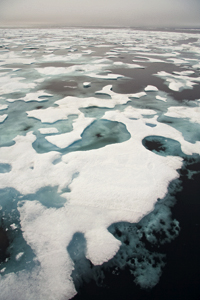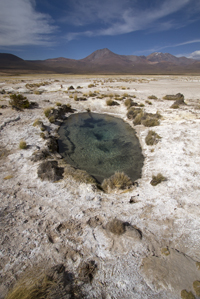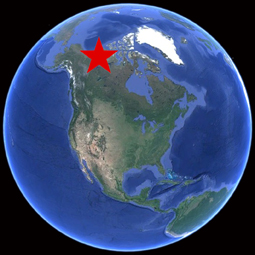 |
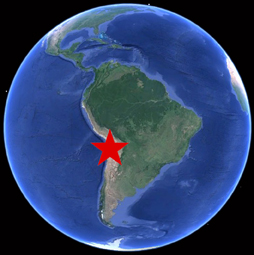 |
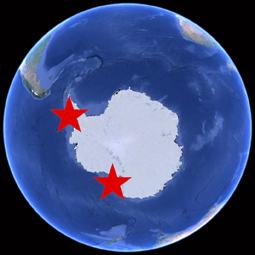 |
THE ARCTIC: Photographs were taken during the “Malina” project in the Beaufort Sea during August 2009. The project examined how increases in light in the Arctic Ocean are affecting both the biology and chemistry in the water. As the Arctic warms, seasonal ice cover recedes to unprecedented levels. Now, instead of sunlight being reflected off the ice and back into the atmosphere, it is being absorbed into the water increasing warming and accelerating the process. This includes all wavelengths of light from infra-red (heat) to the high-energy ultraviolet that can change water chemistry, alter cellular structure including damage to DNA, and affect growth and ecological processes. |
ATACAMA DESERT: This region is the driest place on earth in terms of precipitation (less than 1 mm per year) and is often considered to be an analog for Mars. The cold Pacific Ocean currents and the Andes Mountains prevent moisture from reaching this long, thin region of northern Chile. Several salt plains (evaporite salars) can be found which have groundwater fed ponds that may be up to eight times saltier than seawater, yet microbial communities as well as some plants and animals thrive there. The clear skies, low latitude and high altitude (8,000 – 14,000 feet) make these high UV environments. These strong selective pressures lead to the formation of unique communities. |
ANTARCTICA: The highest, driest, and windiest continent was visited eleven times since 1981. The first project focused on studying the microbial mats that grow in the bottom of the ice covered lakes in the Dry Valleys. Subsequent trips were to study ozone depletion and increases in ultraviolet radiation during oceanographic research cruises to the Gerlache Straits and Ross Sea. Temperature and ice cover changes cause similar effects as those seen in the Arctic, especially important during the spring phytoplankton bloom that drives much of the biological production during the rest of the year. Sea ice and icebergs play an even more important role in the ecology of the Southern Ocean. |
